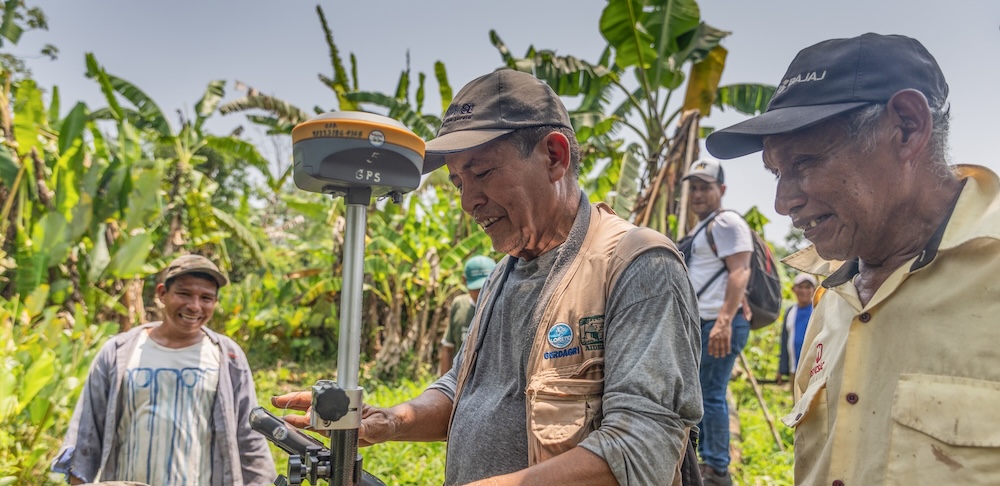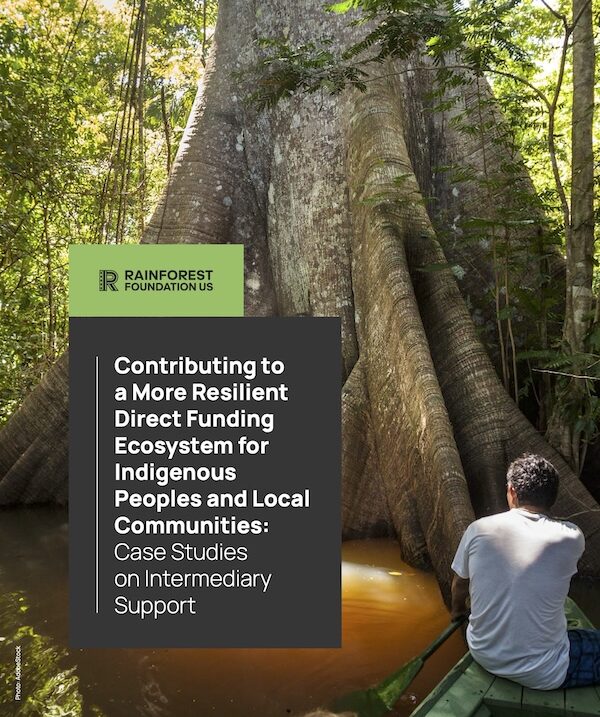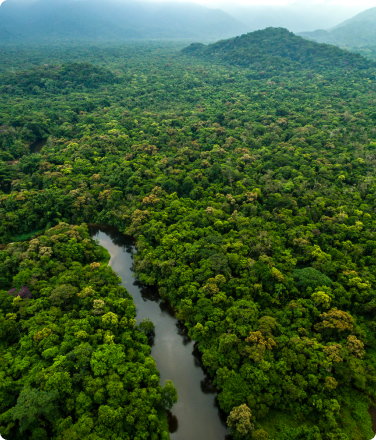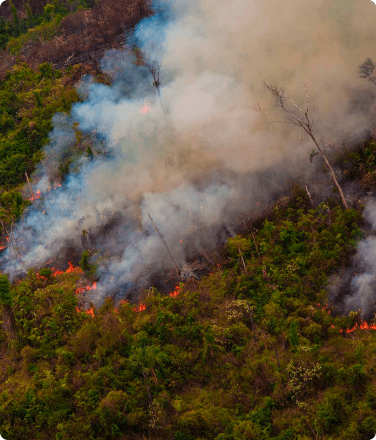Indigenous peoples and local communities protect 36% of the world’s intact tropical forests, yet receive less than 1% of international climate funding.
If you are familiar with this work, you know this contradiction intimately. But closing the gap requires more than good intentions—it demands practical strategies that navigate entrenched systems while building genuine autonomy. Four detailed case studies spanning Guyana, Peru, Mesoamerica, and a global Indigenous alliance document how $20.7 million reached Indigenous and local communities through partnerships designed to transfer power rather than maintain dependency.
The Intermediary Issue: Why Good Intentions Can Fall Short
The direct funding barriers are systemic and widespread: eligibility criteria incompatible with how Indigenous organizations operate, persistent capacity gaps driven by chronic underinvestment, and power imbalances rooted in colonial legacies. These structural challenges keep funding concentrated in offices far from forests while excluding the most effective forest protectors from accessing the resources they need.
Multiple layers of intermediary organizations have emerged to bridge these funding gaps, yet many have become part of the problem. The term “intermediary” has become a catch-all for roles ranging from catalytic to extractive, making it essential to examine what these organizations actually do.
Without intentional design, intermediary organizations risk becoming permanent fixtures that absorb resources while adding bureaucratic layers—essentially institutionalizing the very barriers they were meant to overcome.To avoid becoming permanent gatekeepers, intermediary organizations must position themselves as temporary facilitators working toward direct funding relationships with Indigenous and local community organizations.
The four case studies documented here demonstrate how Rainforest Foundation US (RFUS) put this principle in practice in playing its role as intermediary, showcasing how it is possible to deliberately strengthen partners’ institutional capacity, actively facilitate direct donor relationships, and adapt their roles as organizations grow stronger.
What Strategic Intermediation Can Look Like
These case studies highlight four interconnected roles that RFUS has played across different geographies, contexts, and timeframes. They illustrate how supportive intermediation can work, offering a trust-based, adaptive approach that is grounded in and responsive to partners’ evolving needs within the broader funding landscape:
- Leveraging credibility for fundraising success: breaking large grants into manageable sub-grants, providing fiscal sponsorship, and enhancing partner competitiveness in complex funding landscapes.
- Absorbing administrative complexity: managing compliance, bridging donor disbursement delays, and facilitating intercultural translation between donors and partners.
- Supporting holistic, partner-led capacity strengthening: providing technical assistance and developing organizational capacities that align with partners’ own priorities and aspirations.
- Reshaping partnerships: changing the way relationships between communities and other actors—including donors and government agencies—are structured so that communities have greater voice, influence, and control over funding and policy decisions.

Results That Demonstrate Impact
In Guyana, a decade-long partnership resulted in a tenfold increase in the annual budgets of the Amerindian Peoples Association and the South Rupununi District Council, enabling significant staff expansion and stronger internal systems. Currently, both organizations manage large multi-year direct grants independently, with funding from RFUS representing less than 5-7% of their budgets, and they now issue subgrants to RFUS for specific technical services. This role reversal demonstrates how effective capacity strengthening investment can fundamentally reshape how intermediaries and partners work together over time.
Meanwhile, the Global Alliance of Territorial Communities illustrates how strategic fiscal sponsorship can accelerate movement-building without sacrificing autonomy. Through carefully tailored administrative support that provided legal status and comprehensive infrastructure, the Alliance scaled from a $500,000 grassroots movement to a structured organization with a 15-person Secretariat managing over $3 million annually from more than a dozen donors. This case proves that intermediaries can absorb administrative complexity while preserving political identity and enabling rapid global policy influence.
In Mesoamerica, cultural and technical bridging contributed to the Mesoamerican Alliance of Peoples and Forests (AMPB) accessing complex USAID bilateral funding while building lasting institutional capacity. RFUS met extensive compliance requirements and bridged disbursement delays, allowing AMPB to focus mostly on programming. With RFUS support, AMPB’s budget grew 20% and the organization secured an additional $2 million in direct funding. The Mesoamerican Territorial Fund was also established, channeling nearly $2 million to over 200 communities across six countries. This demonstrates how intermediaries can leverage credibility to create scalable models for community-controlled resource allocation.
And in Peru, we see how strategic intervention can completely reinvent institutional relationships. By channeling $530,000 to strengthen the Interethnic Association for the Development of the Peruvian Rainforest (AIDESEP)’s coordination role, the partnership enabled 26 community land titles covering 77,265 hectares to be completed in record time (8-18 months versus decades). AIDESEP became a key contributor to local government processes, while Indigenous-led logistics networks created enduring economic infrastructure. This shows how intermediation can support the reshaping of partnerships with local government while building capacity for sustainable community organizations.
Building Diverse, Resilient Funding Ecosystems
These cases collectively demonstrate that robust funding ecosystems benefit from diversity—multiple direct funding pathways and support models that complement rather than compete with each other. Strategic intermediation can strengthen this diversity by adapting roles as partner capacities evolve and as new challenges emerge.
The evidence shows it is possible to meet accountability standards without compromising the autonomy of Indigenous peoples and local communities, delivering both immediate impact and the institutional strength to sustain it. Most importantly, well-designed intermediation creates bridges that communities not only cross to reach greater independence, but eventually maintain and steward themselves, while opening new paths for others to follow.




